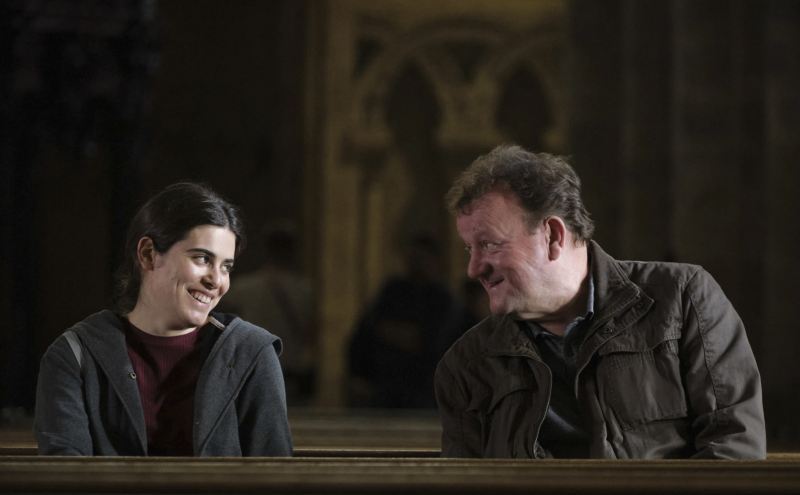For TJ, whose marriage has failed and who’s estranged from his son, things go from bad to worse. His only companion is a beloved former stray dog who appeared in his life at his darkest moment; she is constantly threatened by nasty dogs owned by thugs. A former miner himself, he’s holding onto his pub by the skin of his teeth. And now, some of the locals want to use his empty back room to hold a meeting and air grievances about the migrants. He makes excuses.
Further conflict ensues when TJ agrees to use the back room for a far different purpose: to serve free meals, as a way of building community, and a throwback to solidarity during labor unrest decades earlier. This works beautifully for many, but the most negative voices in the town — in scenes that occasionally feel a tad heavy-handed — continue to sow discord and harass the Syrians, all while denying they are racist. “All we want is our pub back,” they say.
Worse is to come for the Old Oak, which essentially becomes the main character here: a connection to a happier past for the village, a key part of a troubled present, and a source of possible hope for a harmonious future.
And it is indeed hope that infuses the closing scenes, unlike many a Loach film. Yes, there are a few too many speeches that sound like, well, speeches rather than dialogue. And the resolution arrives just a bit too quickly and easily.
But these seem like forgivable sins. After nearly six decades of filmmaking, hope is not too bad a place to end up.

‘The Old Oak’ is released nationwide on April 4, 2024.





